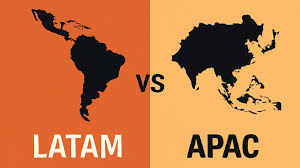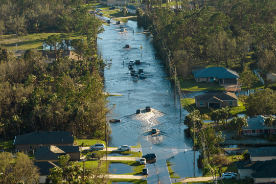Economy
Economy LATAM vs. Global Benchmarks Where regional leaders already beat peers.

Latin America’s economies are often portrayed as lagging behind global peers, but in several areas the region has already outperformed international benchmarks. While challenges such as inflation, inequality, and political volatility continue to dominate headlines, regional leaders in countries like Brazil, Mexico, Chile, and Colombia have made strides in sectors ranging from renewable energy to digital finance, often placing them ahead of developed-market counterparts.
One of the most visible areas is renewable energy integration. Brazil and Uruguay, for instance, generate a far greater share of their electricity from hydropower, wind, and solar compared to many OECD nations. Their ability to expand renewable capacity while maintaining grid stability has allowed them to set ambitious decarbonization goals with a degree of confidence that surpasses larger economies still dependent on coal or gas. These achievements provide a benchmark for how emerging markets can leapfrog traditional development pathways and embed sustainability at the core of economic growth.
Another sector where Latin America leads is financial inclusion through digital channels. Countries such as Mexico and Brazil have pioneered fintech adoption, with platforms like Pix in Brazil revolutionizing instant payments and enabling millions of previously unbanked citizens to participate in the formal economy. In several metrics—such as mobile payment penetration and user adoption—Latin America has pulled ahead of regions like Europe and North America, where legacy banking systems remain dominant. The social and economic benefits of these platforms highlight how innovative policy frameworks and private-sector agility can create scalable solutions to structural challenges.
Latin America has also proven resilient in commodity-linked growth and fiscal management. While global peers struggled with supply shocks and volatile currencies during recent crises, several Latin American central banks moved faster and more aggressively to raise interest rates, containing inflation more effectively than many advanced economies. Brazil and Chile, for example, have earned investor recognition for proactive monetary tightening, which helped stabilize capital flows and maintain relative financial discipline compared to larger economies that were slower to act.
There are also areas where social and governance benchmarks show relative strength. Chile and Costa Rica, for example, consistently outperform global averages in renewable integration, healthcare outcomes, and education relative to income level. These gains demonstrate how focused policy, even in resource-constrained environments, can deliver above-average results compared to global peers.
Of course, Latin America still faces structural hurdles—high inequality, crime, political fragmentation, and external dependence on commodity exports—that limit its ability to sustain outperformance across the board. But the evidence from energy, digital finance, and macroeconomic management shows that the region is not merely catching up to global benchmarks; in several cases, it is setting them. For policymakers, investors, and development institutions, these examples offer a fresh perspective: Latin America is not only a region of volatility but also one of innovation and resilience, capable of shaping global best practices in targeted sectors.

At least 20 people killed in Russian glide bomb attack on village in eastern Ukraine

Transition vs. Physical Risk A decision tree for which risk dominates by industry.

Getting Assurance-Ready — Controls and evidence trails for sustainability data.
trending posts

TOP Categories
Google Web Reporters













3 comments
David Bowie
3 hours agoEmily Johnson Cee
2 dayes agoLuis Diaz
September 25, 2025